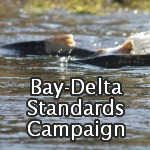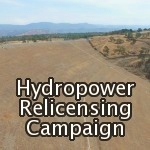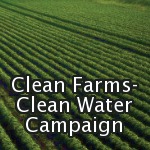The Department of Water Resources (DWR) proposes to build a massive tunnel under the Delta of the Sacramento and San Joaquin rivers. It is bad for fish and wildlife. It is bad for water quality. It is bad for the communities and their economies in and around the Delta.
California Sportfishing Protection Alliance (CSPA) was born in 1983, in the wake of the defeat of the first major effort to bypass water around the Delta. CSPA has opposed such schemes ever since.
Background
In 1982, voters of California voted down a plan to move water from the Sacramento River around the Delta in a “peripheral canal.”
In 2007 DWR and state and federal water contractors revived the peripheral canal scheme. This scheme had the same goal of more efficiently feeding Sacramento River water to the canals that lead from the south Delta to the San Joaquin Valley and southern California.
It started as the Bay Delta Conservation Plan” (BDCP), a stakeholder process to develop a “habitat conservation plan” under the Endangered Species Act (ESA). Habitat conservation plans provide an exemption from state and federal ESA requirements for fifty years. The idea was that moving water around the Delta would be coupled with environmental improvements that would benefit everyone.
It didn’t happen.
In 2015, DWR abandoned the stakeholder process and proposed to build two huge tunnels under the Delta, rebranded as the “California WaterFix.” The rebranding included messaging that two proposed tunnels under the Delta would benefit fish by reducing the flow of water within the Delta towards DWR and the Bureau of Reclamation’s existing “export” pumps in the south Delta. After water rights hearings that lasted three years, multiple lawsuits, and an adverse outcome before the Delta Stewardship Council, DWR halted its effort late in 2018.
The version started in 2020 is now called the “Delta Conveyance Project,” or, informally, the Delta tunnel. The project has been stripped of its conservation guise. The new Delta tunnel proposal is unabashedly a water supply project. As far as fish are concerned, DWR now argues only that its Delta tunnel would not make conditions worse.
CSPA has opposed BDCP, the WaterFix twin tunnels, and the new Delta Conveyance Project single tunnel every step of the way. Over the years, CSPA has submitted hundreds of pages of comments and testimony to support its opposition. CSPA has also filed many lawsuits to challenge various aspects of the various iterations of the tunnel projects in the courts.
In 2020, CSPA joined many environmental and fishing groups, and several Delta counties, in opposing a “validation” action by DWR to fund the new tunnel project. In January 2024, a superior court judge ruled against DWR. The judge said that DWR could not sell bonds for the new project based on a vague conceptual project description it made decades ago.
On December 8th, 2023 DWR published a Final Environmental Impact Report (EIR) for the Delta tunnel project. On December 21, 2023 DWR approved the Project by filing a Notice of Determination (NOD). On January 19, 2024, CSPA joined a lawsuit challenging the Department of Water Resources’ approval of the Delta Conveyance Project, based on a long list of deficiencies.
Some of CSPA’s greatest particular issues with the Final EIR are that it does not say how the project and upstream reservoirs would operate and does not propose flows for the Delta as required by law.
Key Facts about the Delta Conveyance Project
The Delta Conveyance Project is a proposed 40-foot-diameter tunnel that would extend for approximately 45 miles. The proposed underground tunnel would take water from the Sacramento River before it enters the Delta. The water would then enter the State Water Project’s (SWP’s) 444-mile-long aqueduct to be exported for agricultural and urban use in central and southern California.
DWR’s Final EIR said that since the 1960s, when the State Water Project (SWP) began, “regulatory changes intended to better protect fish and wildlife resources in the Delta have reduced the amount of water that the SWP can export from the Delta to central and southern California.”
Well, those regulatory changes have come about because DWR’s operation of the SWP has been disastrous for fish.
Delta smelt, for example, are an endemic species vital to the Delta’s ecosystem. In the 1980s the Delta smelt population declined by more than 80 percent. In 1993 Delta smelt were listed as threatened under federal and California endangered species acts. In 2007, this designation forced DWR to cease pumping water when hundreds of Delta smelt perished at south Delta pumps.
Governor Newsom and DWR assert that the Delta Conveyance Project will improve the SWP’s ability to export water to southern parts of the state in the face of climate change, droughts, potential earthquakes, and levee failures. They frame it as “modernizing” infrastructure. Delta defenders respond that the concept is 40-plus years old and uses modernist branding to justify the obsolete strategy of diverting still more water from an overtapped ecosystem.










Pingback: The internet guide to the Bay Delta Conservation Plan » MAVEN'S NOTEBOOK | MAVEN'S NOTEBOOK
Pingback: CSPA’s Submits Comments at the Conclusion of the Water Fix’s RDEIR/SDEIS Public Comment Period | CSPA News and Archives